Story and photos by Shabna Ullah
Farming is the main source of income in the indigenous community of Bonasika Mission, Essequibo Islands but the problem is that there is not enough land. Toshao Stafford Williams said residents are unable to engage in large-scale farming.
He said residents farm “by the lot” and the little produce, including cassava, eddo and plantains, is sold at the Parika Market on Thursdays and Fridays.
On Sundays they travel to the market for shopping.
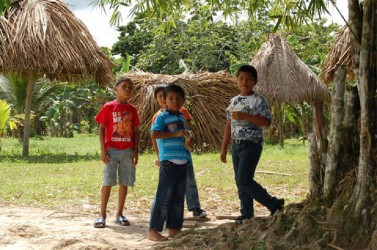

Two boys: Ramesh and Kishan were standing at a landing by a vacant house on the opposite side of the mission when this newspaper visited. The house belonged to their uncle and they were about to spray the weeds in the yard.
Williams said that another setback is the shortage of farming tools which would normally be provided to them by the regional administration of Region Three. He said their lives would be easier if the tools are made available to them.
The village spans 100 rods in width and 600 rods in length and has 22 houses with a population of about 140. The residential and farming land belong to the village council.
He said residents built their houses through self-help after cutting the wood from “various grants” including at Lanaballi.
According to Williams, there is an urgent issue with the land as it has not been surveyed and residents are “hustling to pay inspection fee.” He hopes the surveyor would go as promised so they could have the issue straightened out.
Humble community

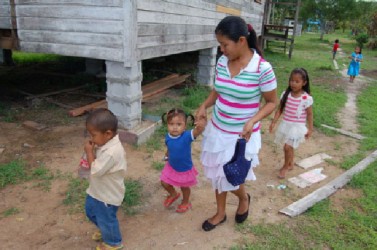
A humble community, just like its people, Bonasika Mission lacks basic amenities like electricity and water. Residents use the water from the creek for bathing, laundry, cooking and other chores.
During the spring tide, the water gets muddy and residents are unable to use it. They would use rain water that they would have reserved in tanks when this happens.
Residents enjoy cell phone services with signals coming from the towers at Parika. There are times though when the signals are very poor, especially when it rains.
Although residents have grown accustomed to their simple lifestyles, their dream is to see the village developed and their lives improved.
They welcomed this newspaper warmly and were happy that their community would be featured. When Sunday Stabroek visited, some residents were attending church at the Bonasika Faith Tabernacle located alongside the creek. Pastor Deodat of Goed Fortuin, West Bank Demerara had travelled to Bonasika with a team via speedboat that they boarded at the wharf at St Lawrence, Parika. That is also the main access for residents of Bonasika and other nearby islands.
Health centre
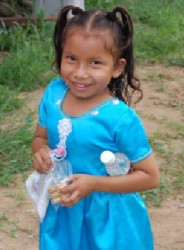
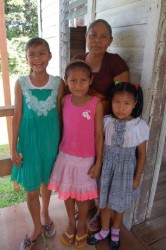
Residents were concerned that the area does not have a health centre and said they have to travel a few miles away at Morasi to seek medical help. Students travel by boat to get to school at Upper Bonasika. They pay a fee of $140 per day and many parents are finding it difficult to afford the cost.
A resident, Ulin, said it is “hard for me to find money for transportation and lunch” for her three children; Sheneka, 11, Serena, 9 and La Toya, 6. Her husband works as a labourer with farmers and does not earn much.
Forty-one-year-old Shelita Smith has nine children. Life is also tough for her, not just financially, but because she had been living with an abusive husband for several years.
The man who was also an alcoholic is currently serving a three-year jail sentence for burning her stepmother’s house down last February.
Shelita now feels safer and can live her life without fear. At the time of the fire, she had escaped the abuse and was hiding at her stepmother’s home located in Upper Bonasika. The man had tracked her down and insisted that she return home with him. She refused and he set the house on fire and was subsequently arrested and charged.
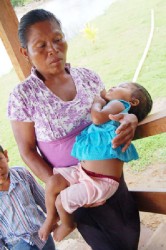
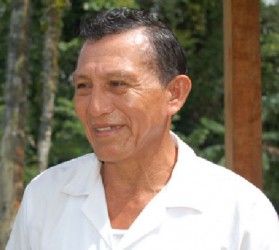
He was in the habit of beating her whenever he was drunk and she would “run with my [younger] children.” Her eldest child is 22 years old and works on a farm.
Shelita also works with farmers and was “finding it hard” to make ends meet but is determined to make a sacrifice to ensure her children are well taken care of.
Most of the residents moved from Moruka in Region One and started to occupy the community almost 20 years ago.
Sheniza George, 22, and her brother, Ravin George, 18, were among those who moved with their parents when they were little. They have both been trained as Community Support Officers, a special programme designed for Amerindians. They both receive a monthly stipend.
Sheniza, mother of a one-year-old son, assists at the health centre. She dropped out of school in third form because “my parents could not afford to send me to a secondary school” on the coast.
Ravin is an assistant at the school. He told Sunday Stabroek that there are no recreational facilities in the community. He and his friends would have fun playing cricket and they would be more than grateful if a basketball court could be set up in the village for them.
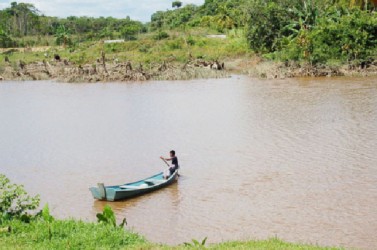
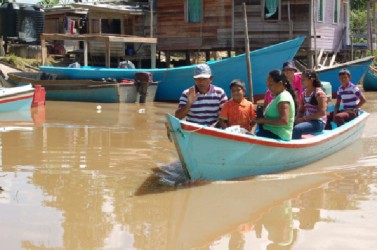
They would also go fishing with hooks and seines for fun and would take the catch home to cook. Their other means of recreation, he said, is visiting a sand bank just before Fort Island to picnic.
He said there is no place for social problems, especially since everyone, including the youth would attend church which helps to steer them in the right direction.
According to him too, they all have good relationships with each other in the village and they “look out for each other.”




